No-one denies sustainability needs to be addressed. But when it comes to how best to tackle the challenge, opinion is divided. Nick Hughes reports
The food industry is no stranger to hearing the gory details of its contribution to climate change. When Dax Lovegrove stood up to deliver the damning evidence at The Grocer's Sustainability Forum this week, it felt like Groundhog Day.
"Emissions from the UK food chain need to be cut by 70% by 2050," pronounced the head of business and industry at WWF-UK. "The average cup of coffee uses 208 litres of water. Some 62% of the UK's water footprint is embedded in food products from overseas."
However many times you repeat the facts, they still don't make for easy listening. To their credit, the majority of food businesses are tackling the challenges head on. Retailers, in particular, have been cutting their own direct energy emissions in a bid to outgreen one another. But the fact remains that the direct environmental impact of a supermarket is a mere drop in the ocean when compared with the indirect emissions produced by their suppliers and consumers.
The evidence from the conference suggests retailers are, in the words of Asda's head of corporate policy for sustainability and ethics Julian Walker-Palin (pictured), "on the cusp of changing our focus".
As the interface between suppliers and consumers, supermarkets are waking up to the fact they have a vital role to play in limiting not just their own emissions, but the indirect emissions generated both upstream by suppliers and downstream by consumers and it was the latter issue that generated the fiercest debate at the forum.
Tesco now hosts a Green Living Everyday website, which not only has money-saving eco-tips for day-to-day living, but offers pointers on how to eat a greener diet with advice such as: "Vegetables use less energy to produce than meat. So eat vegetarian or vegan meals to reduce your environmental impact and lower your carbon footprint."
Asda is taking things a stage further. While Tesco's advice requires action on the part of the consumer, Asda is looking at taking the decision out of the hands of shoppers by stocking products based on their sustainability credentials.
"Consumers have a desire to cut their environmental footprint, but they are confused by competing messages," says Walker-Palin. "We want to make sustainability affordable and we will choice edit products to make that happen."
Choice editing on the basis of sustainability is a controversial area and has no shortage of detractors. "It's easy just to say you're not going to sell something," says Tesco's community and government director David North. "The real problem is that in a country like Britain, if you do it by choice editing you're asking someone to do a fifth less of what they're already doing. What we need to do is not restrict choice but encourage people to make more sustainable choices."
Tesco itself has edited its lighting range in line with EU legislation but no one can argue that taking out frosted and white light bulbs and replacing them with energy-saving bulbs has had anything but a positive outcome. Indeed, for products where there's a clear delineation between what is good and bad for the environment, the argument for choice editing is compelling. It is in extending the concept to all products that the waters become muddier.
"There are some products where choice editing makes sense and I'm sure the power the retailer has is very positive," says sustainability affairs manager for Procter & Gamble UK, Kirstie Hawkes. "The issue is who makes that decision and is it the right decision?"
The problem with defining a product by its sustainability is that the concept itself is inherently paradoxical. Trying to balance competing factors such as nutrition, animal welfare, carbon, water and Fairtrade inevitably involves trade-offs. How do you choose between an orange grown in the UK under artificial light over one grown naturally in Spain but shipped? Is a Fairtrade rose grown in Africa in a region of water scarcity more sustainable than one grown in the UK?
Measuring the sustainability of individual products is proving challenging. Last December, the Sustainable Development Commission, tasked with characterising a sustainable diet, identified "high-priority win-win measures", which it said would advance sustainability as well as "either helping or at least not hindering the government's health agenda".
But the Food and Drink Federation derided the SDC's efforts as "at best simplistic and at worst deliberately disingenuous".
Asda's parent company Walmart has had its own stab at measuring sustainability through the development of a Sustainability Index, which attempts to pull together and quantify different types of environmental impacts for every product it sells. The retailer hopes the index will one day become a global standard. "We're very clear this isn't just a Walmart project," says Walker-Palin. "The intention is to develop one global index for measuring sustainability."
Other retailers are focusing on individual measures of sustainability. Tesco is a strong advocate of carbon footprinting and has carbon labels on products including milk, orange juice and washing detergents. But there is conjecture over whether such labelling actually alters buying habits. "When we asked consumers what difference nutritional labelling made to their purchasing habits, they said very little," says Walker-Palin.
If anything, the proliferation of labels is simply adding more layers of confusion. When carbon labels and nutritional labels sit alongside each other, you're effectively asking consumers to make a trade-off between their own health and the health of the planet.
Retailers are keenly aware of the dangers of moving too quickly for consumers. Walker-Palin illustrates the point with an anecdote about the packaging of an Asda chicken ready meal.
"Consumers would invariably remove the sleeve to see what the product looked like," he says. So Asda redesigned the packaging, consigning all the information to a watch-shaped strip of cardboard around the meal. "The packaging was reduced significantly, but sales went through the floor," says Walker-Palin. "Sometimes you believe you're doing the right thing, but your customers aren't ready."
For all the consumer awareness of sustainability, the age-old drivers of consumption still hold true. The move to energy-saving light bulbs was overwhelmingly driven by cost reduction rather than environmental factors, admits North.
If price remains so important to consumers, will it therefore fall to brand owners to actively price-promote only the most sustainable products in their range? In an ideal world, yes, says Hawkes, but the reality is different. "I could only promote Ariel Excel Gel, but then Persil could promote its big box and I'd end up losing money. We have to remain competitive."
Businesses have always argued that economic sustainability must be given equal footing when defining a sustainable product. It's another piece to a puzzle that still has plenty of gaps to fill.
The food industry is no stranger to hearing the gory details of its contribution to climate change. When Dax Lovegrove stood up to deliver the damning evidence at The Grocer's Sustainability Forum this week, it felt like Groundhog Day.
"Emissions from the UK food chain need to be cut by 70% by 2050," pronounced the head of business and industry at WWF-UK. "The average cup of coffee uses 208 litres of water. Some 62% of the UK's water footprint is embedded in food products from overseas."
However many times you repeat the facts, they still don't make for easy listening. To their credit, the majority of food businesses are tackling the challenges head on. Retailers, in particular, have been cutting their own direct energy emissions in a bid to outgreen one another. But the fact remains that the direct environmental impact of a supermarket is a mere drop in the ocean when compared with the indirect emissions produced by their suppliers and consumers.
The evidence from the conference suggests retailers are, in the words of Asda's head of corporate policy for sustainability and ethics Julian Walker-Palin (pictured), "on the cusp of changing our focus".
As the interface between suppliers and consumers, supermarkets are waking up to the fact they have a vital role to play in limiting not just their own emissions, but the indirect emissions generated both upstream by suppliers and downstream by consumers and it was the latter issue that generated the fiercest debate at the forum.
Tesco now hosts a Green Living Everyday website, which not only has money-saving eco-tips for day-to-day living, but offers pointers on how to eat a greener diet with advice such as: "Vegetables use less energy to produce than meat. So eat vegetarian or vegan meals to reduce your environmental impact and lower your carbon footprint."
Asda is taking things a stage further. While Tesco's advice requires action on the part of the consumer, Asda is looking at taking the decision out of the hands of shoppers by stocking products based on their sustainability credentials.
"Consumers have a desire to cut their environmental footprint, but they are confused by competing messages," says Walker-Palin. "We want to make sustainability affordable and we will choice edit products to make that happen."
Choice editing on the basis of sustainability is a controversial area and has no shortage of detractors. "It's easy just to say you're not going to sell something," says Tesco's community and government director David North. "The real problem is that in a country like Britain, if you do it by choice editing you're asking someone to do a fifth less of what they're already doing. What we need to do is not restrict choice but encourage people to make more sustainable choices."
Tesco itself has edited its lighting range in line with EU legislation but no one can argue that taking out frosted and white light bulbs and replacing them with energy-saving bulbs has had anything but a positive outcome. Indeed, for products where there's a clear delineation between what is good and bad for the environment, the argument for choice editing is compelling. It is in extending the concept to all products that the waters become muddier.
"There are some products where choice editing makes sense and I'm sure the power the retailer has is very positive," says sustainability affairs manager for Procter & Gamble UK, Kirstie Hawkes. "The issue is who makes that decision and is it the right decision?"
The problem with defining a product by its sustainability is that the concept itself is inherently paradoxical. Trying to balance competing factors such as nutrition, animal welfare, carbon, water and Fairtrade inevitably involves trade-offs. How do you choose between an orange grown in the UK under artificial light over one grown naturally in Spain but shipped? Is a Fairtrade rose grown in Africa in a region of water scarcity more sustainable than one grown in the UK?
Measuring the sustainability of individual products is proving challenging. Last December, the Sustainable Development Commission, tasked with characterising a sustainable diet, identified "high-priority win-win measures", which it said would advance sustainability as well as "either helping or at least not hindering the government's health agenda".
But the Food and Drink Federation derided the SDC's efforts as "at best simplistic and at worst deliberately disingenuous".
Asda's parent company Walmart has had its own stab at measuring sustainability through the development of a Sustainability Index, which attempts to pull together and quantify different types of environmental impacts for every product it sells. The retailer hopes the index will one day become a global standard. "We're very clear this isn't just a Walmart project," says Walker-Palin. "The intention is to develop one global index for measuring sustainability."
Other retailers are focusing on individual measures of sustainability. Tesco is a strong advocate of carbon footprinting and has carbon labels on products including milk, orange juice and washing detergents. But there is conjecture over whether such labelling actually alters buying habits. "When we asked consumers what difference nutritional labelling made to their purchasing habits, they said very little," says Walker-Palin.
If anything, the proliferation of labels is simply adding more layers of confusion. When carbon labels and nutritional labels sit alongside each other, you're effectively asking consumers to make a trade-off between their own health and the health of the planet.
Retailers are keenly aware of the dangers of moving too quickly for consumers. Walker-Palin illustrates the point with an anecdote about the packaging of an Asda chicken ready meal.
"Consumers would invariably remove the sleeve to see what the product looked like," he says. So Asda redesigned the packaging, consigning all the information to a watch-shaped strip of cardboard around the meal. "The packaging was reduced significantly, but sales went through the floor," says Walker-Palin. "Sometimes you believe you're doing the right thing, but your customers aren't ready."
For all the consumer awareness of sustainability, the age-old drivers of consumption still hold true. The move to energy-saving light bulbs was overwhelmingly driven by cost reduction rather than environmental factors, admits North.
If price remains so important to consumers, will it therefore fall to brand owners to actively price-promote only the most sustainable products in their range? In an ideal world, yes, says Hawkes, but the reality is different. "I could only promote Ariel Excel Gel, but then Persil could promote its big box and I'd end up losing money. We have to remain competitive."
Businesses have always argued that economic sustainability must be given equal footing when defining a sustainable product. It's another piece to a puzzle that still has plenty of gaps to fill.



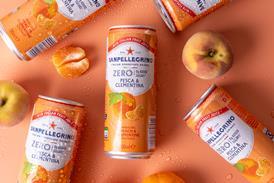








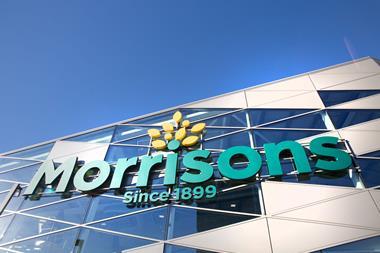

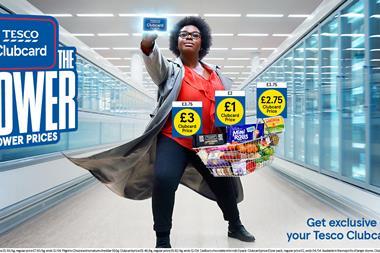
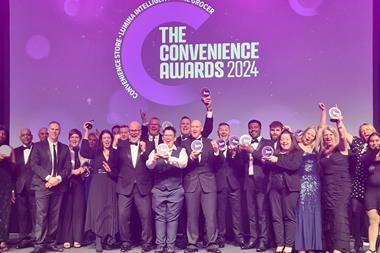


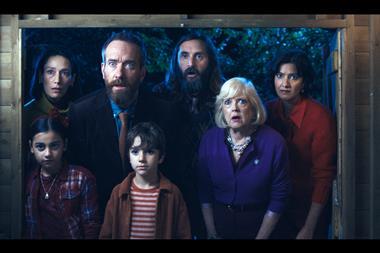
No comments yet